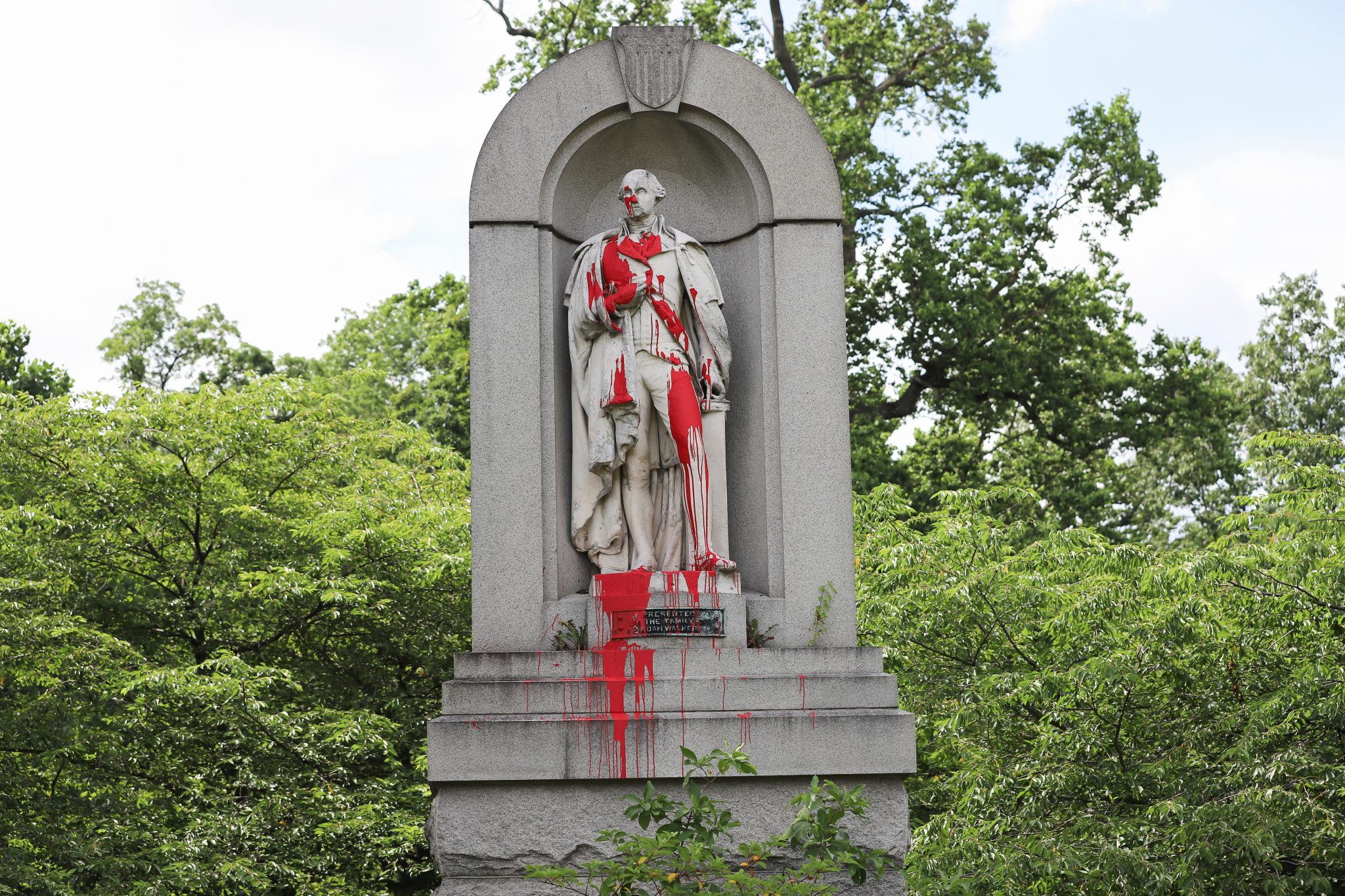Notes From a Baltimore All Souls’ Day
Our cities are becoming medieval.

Snow flurries met the dawn on All Souls’ Day in northern Maryland, ending two weeks or so of unseasonable warmth at the Mason-Dixon line. That means digging out sweatshirts and coats for the kids before bundling everyone into the car for the drive to Baltimore for the holiday’s obligatory Mass.
St. Alphonsus, the only church in the archdiocese that consistently hosts the traditional Mass, had previously been the city’s Lithuanian parish. There are no longer any Lithuanians in Baltimore; if there were, they would not live in that neighborhood. So the archbishop was happy to hand over the church—a grand decaying neogothic pile, once the parish church of St. John Neumann—and its hefty maintenance costs to one of the traditionalist groups, the Priestly Fraternity of St. Peter. The Dominicans struck a similar deal for Sts. Philip and James near Johns Hopkins University; with the usual sharpness of the mendicant orders, they extracted from the archdiocese a number of additional advantageous concessions along with the church, including control of the campus ministry at Hopkins and (per rumor) a salaried position on the archdiocesan marriage tribunal.
Simply put: The Catholic Church in Baltimore is dying. The churches within the city limits can seat 45,000 faithful; the weekly census is below 2,000. The archdiocese has declared bankruptcy, preempting a change in Maryland law that would expose it to massive liabilities from legacy abuse lawsuits. The inevitable result: Archdiocesan services (and real property) get spun off to groups that are solvent and in a position to take advantage—the ecclesiastical parallel of the great government-NGO complex, with the caveat that at least in the Archdiocese of Baltimore my preferred groups are winning right now.
While driving up Pleasant Street toward the church, I noticed for the first time that the scooter shares that afflict every other East Coast city have finally arrived on the sidewalks of Baltimore. Charm City has the highest robbery rate in the country, but the scooter tycoons can apparently clutter the pavements without fear of excessive loss. It’s hard to think of a better concrete illustration of anarcho-tyranny.
Baltimore leans a little heavily on the anarcho half of that compound. With the second-highest homicide rate in America—thank you, New Orleans, for the above-and-beyond effort—Baltimore is a touch more dangerous than Port-au-Prince and rather more dangerous than Johannesburg. Last year, a number of St. Alphonsus parishioners considered ending their weekly schlep into the city when a squeegee boy shot a motorist dead at an intersection. I am a fair-minded fellow, and will observe that the motorist had gotten out of his car to menace the squeegee boy with a baseball bat; I understand that this circumstance may not allay concerns about the general tenor of life out and about in the queen city of the Patapsco.
Subscribe Today
Get daily emails in your inbox
The response of the city grandees was not encouraging. The mayor suggested that the squeegee boys, who are of course breaking the law, come up with their own “code of conduct” and be given Danegeld by the city to stop threatening people in cars. Per the mayor’s “action plan,” if you present yourself to the city and convince the relevant officials that you are trying very hard to leave the life of squeegeeing behind, you can draw a cool $250 monthly, courtesy of the taxpayers. In return, the taxpayers get to enjoy six whole zones of the city where the police will actually enforce the laws against wandering into traffic and harassing drivers.
Father preached on indulgences at the homily, drily observing that the nearest cemetery where you could rack up some freebies for the poor souls was at the Edgar Allan Poe House, where the man himself is buried in a small yard. He quickly discouraged us from walking through the intervening neighborhood, which is a notorious hotspot for car burglaries. We stuck obediently to the church’s own block, where the parish’s security and the paid muscle for a new and prosperous dope dispensary keep things pretty nonviolent. (The dispensary, “Trufflez,” looks like a capital-intensive affair; the branding suggests the owners are betting on psychedelic legalization sooner rather than later.)
Leftist critics of a pessimistic stripe have proposed that we are entering an era of “neofeudalism,” in which the structures of liberal capitalism will collapse into something older and less dynamic. This line of critique sounds a little hysterical; that’s part of the fun. Yet, as you step out of the moldering church only tenuously controlled by a morally corrupt hierarchy, into streets where the secular state is no longer the only power, as your priest warns you to avoid bandits on your way to score indulgences for the suffering departed in purgatory, it is difficult not to sense something strange in the air. Perhaps more snow is coming.